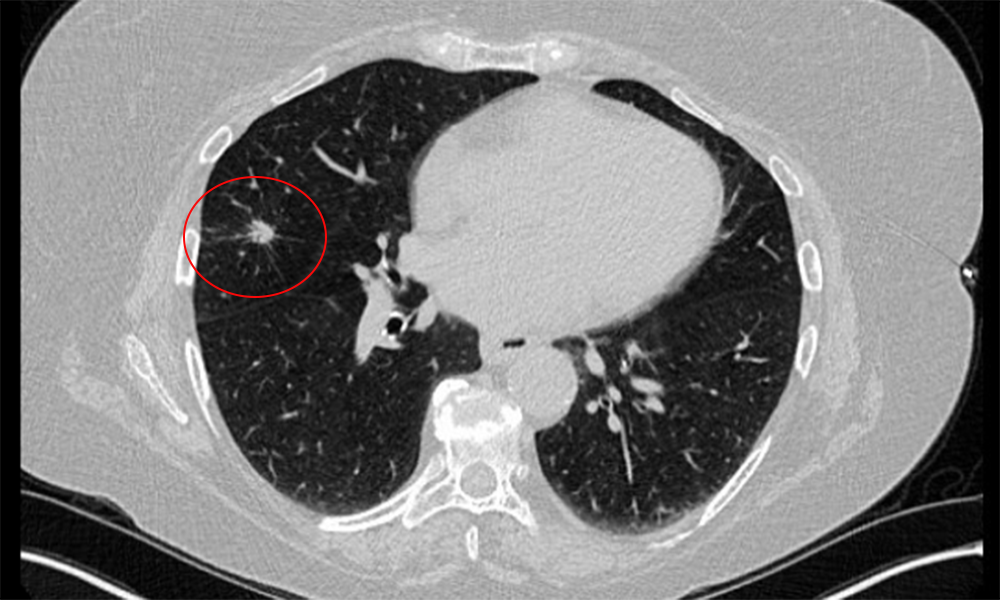Diagnosing early stage lung cancer with robotic bronchoscopy lung nodule biopsy Robotic bronchoscopy lung nodule biopsy After confirming a diagnosis of lung cancer, the patient had curative surgical resection.

The patient
A 67-year-old woman with a past medical history of chronic obstructive pulmonary disease and emphysema presented with a spiculated right upper-lobe nodule that was previously 8 millimeters in size on CT scan of the lung. In six months, it had increased in size to 1.1 centimeters.
The challenge
The lung nodule was small, close to the pleura, surrounded by emphysematous lung and abutting distal branches of the pulmonary vasculature.

A closeup of the nodule, measuring 1.1 centimeters, is shown prior to the biopsy.
The physician

Maroun M. Ghossein, M.D., pulmonary critical care physician, Norton Pulmonary Specialists and Norton Cancer Institute
The solution
Intuitive Ion bronchoscopy software provided direction to the nodule. In real time, using that pathway, Dr. Ghossein reached the nodule using a 2 millimeter camera. Then, using fluoroscopy and radial ultrasound, Dr. Ghossein verified the location. Once location was verified, the team used a variety of tools to confirm and establish a diagnosis of lung cancer.
The result
The patient was sent to surgery for resection of the nodule for Stage 1 lung cancer. Using Ion bronchoscopy, we were able to diagnose Stage 1 lung cancer early on, leading to a curative surgical resection. Robotic-assisted bronchoscopy can reach every part of the lung, including the periphery where about 70% of lung nodules develop. It markedly has improved efforts to find and treat early stage lung cancer.
Refer a patient
To refer a patient to Norton Cancer Institute, visit Norton EpicLink and open an order for Oncology.

